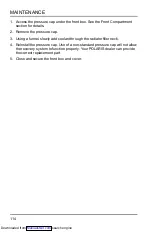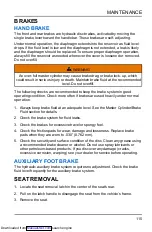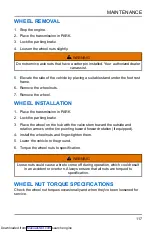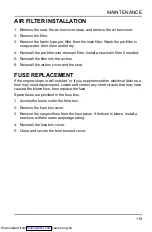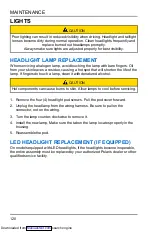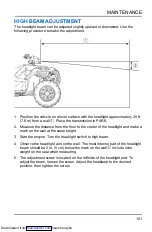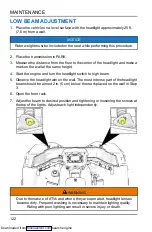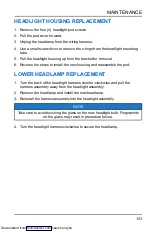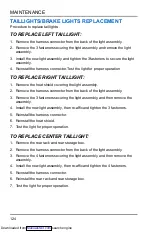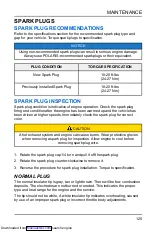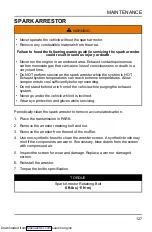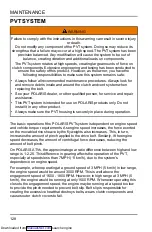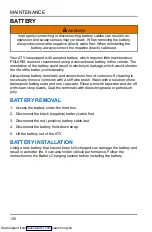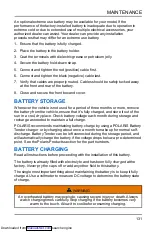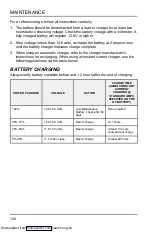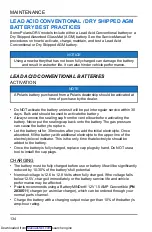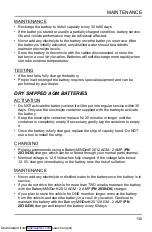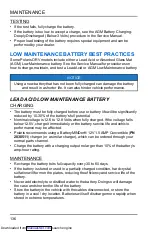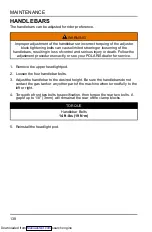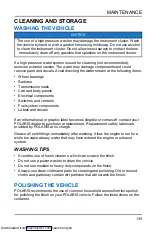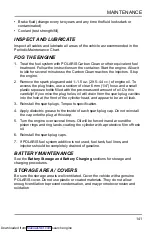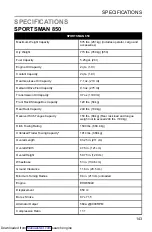
PVT SYSTEM
WARNING
Failure to comply with the instructions in this warning can result in severe injury
or death.
Do not modify any component of the PVT system. Doing so may reduce its
strength so that a failure may occur at a high speed. The PVT system has been
precision balanced. Any modification will cause the system to be out of
balance, creating vibration and additional loads on components.
The PVT system rotates at high speeds, creating large amounts of force on
clutch components. Extensive engineering and testing has been conducted to
ensure the safety of this product. However, as the owner, you have the
following responsibilities to make sure this system remains safe:
• Always follow all recommended maintenance procedures. Always look for
and remove debris inside and around the clutch and vent system when
replacing the belt.
• See your POLARIS dealer, or other qualified person, for service and repair
assistance.
• This PVT system is intended for use on POLARIS products only. Do not
install it in any other product.
• Always make sure the PVT housing is securely in place during operation.
The basic operation of the POLARIS PVT system is dependent on engine speed
and vehicle torque requirements. As engine speed increases, the force exerted
on the movable drive sheave by the flyweights also increases. This, in turn,
increases the amount of pinch applied to the drive belt. Similarly, if the engine
speed decreases, the amount of centrifugal force decreases, reducing the
amount of belt pinch.
On POLARIS ATVs, the approximate gear ratio difference between high and low
range is 1:2.25. This difference in gearing affects the operation of the PVT,
especially at speeds less than 7 MPH (11 km/h), due to the system's
dependence on engine speed.
For example, when operating at a ground speed of 3 MPH (5 km/h) in low range,
the engine speed would be around 3000 RPM. This is well above the
engagement speed of 1600 - 1800 RPM. However, in high range at 3 MPH (5
km/h), the engine would be running at only 1500 RPM. Whenever operating this
close to the engagement speed, the engine may be running at a speed too low
to provide the pinch needed to prevent belt slip. Belt slip is responsible for
creating the excessive heat that destroys belts, wears clutch components and
causes outer clutch covers to fail.
128
Downloaded from
Summary of Contents for Sportsman 850 2022
Page 6: ...4 WELCOME Downloaded from ManualsNet com search engine ...
Page 8: ...6 Downloaded from ManualsNet com search engine ...
Page 14: ...12 Downloaded from ManualsNet com search engine ...
Page 68: ...66 Downloaded from ManualsNet com search engine ...
Page 100: ...98 Downloaded from ManualsNet com search engine ...
Page 160: ...158 Downloaded from ManualsNet com search engine ...
Page 172: ...170 Downloaded from ManualsNet com search engine ...
Page 182: ...180 Downloaded from ManualsNet com search engine ...
Page 187: ...Downloaded from ManualsNet com search engine ...

